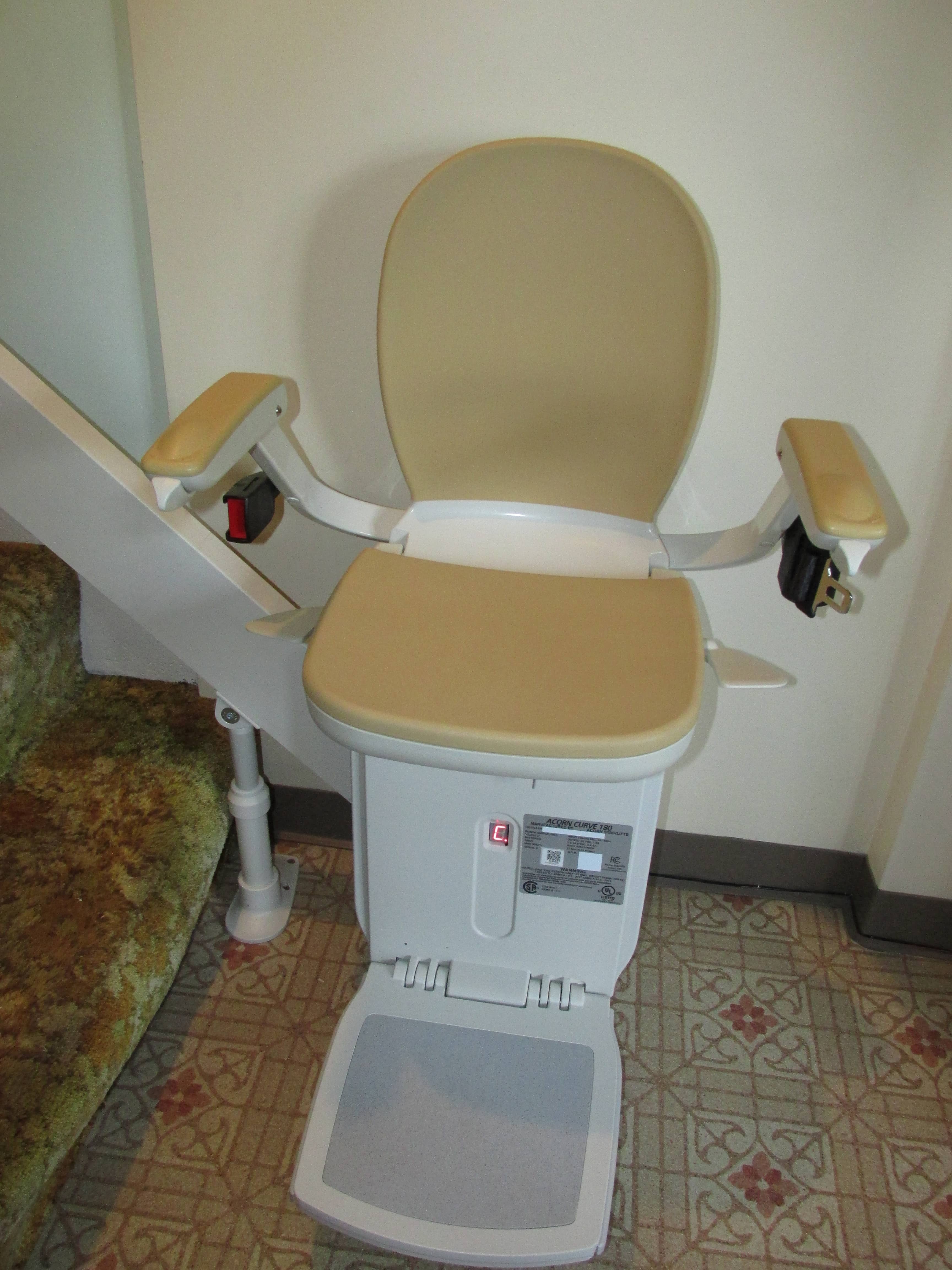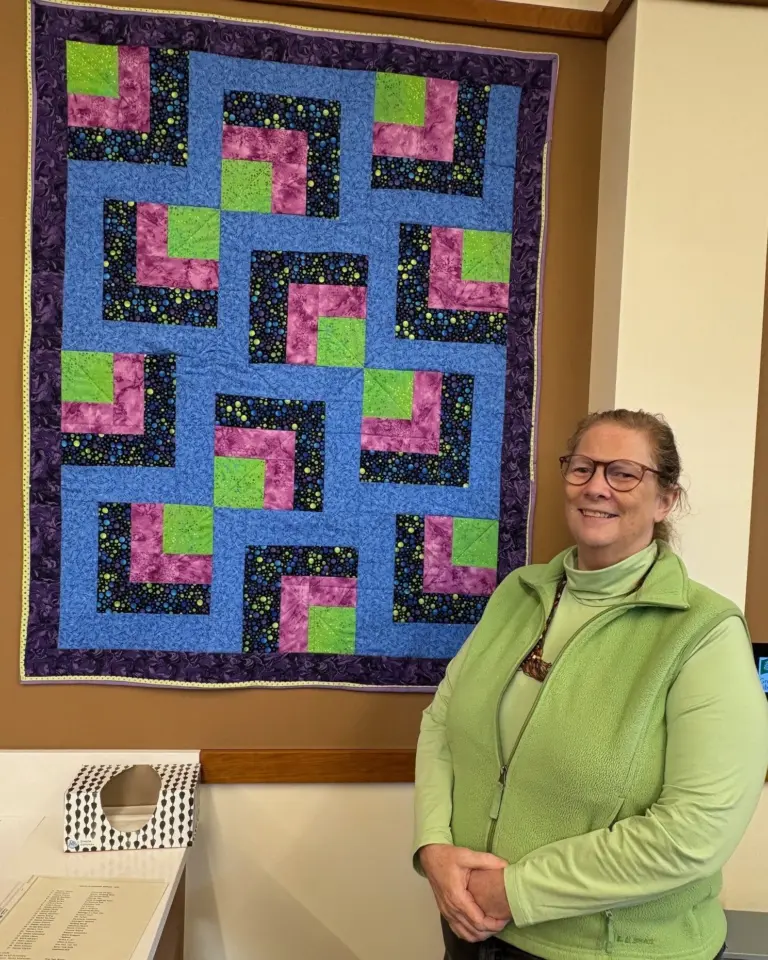
 By Anne Semmes
By Anne Semmes
So, I was stopping by to say hi to an elderly friend (age 92) during the easing of Covid restrictions, and heard him surprisingly tell, “I’m turning my house into a nursing home for my wife.” He began to spell out all the adaptations needed in his house, with his ailing wife now home from the hospital. Love in action, no question.
I then learned of a similar scenario with another elderly friend (84), with what he was doing to accommodate his ailing wife in their home. Both of these men determined to stay in their beloved homes. Nursing homes out of the question (especially after those Covid experiences).
Interested to see those adaptations, I was given a tour of my 92 year old friend’s home. And there was the stairlift (Acorn), with arms and seat belt. “The basic one goes up to the first step,” he says, “But I had it extended into the hallway upstairs, and then the seat turns around and you step off on a solid straightforward hallway.”
Up next was the Safe Step Shower, where once there was a tub. “This is the deluxe model,” he shows, “So, you have a nice seat, and the arms come down.” With its skidproof floor and shower curtain, he says, “You kind of get secure in there.” Nearby, the toilet has its grab bar. And downstairs, there’s that new necessary half bath.
“We don’t have those big parties anymore,” he says, so exchange that big coat closet for a half bath. “I knew I had to have 36 inches by 72 inches,” he says. “You get a terrific carpenter, perfect electrician, and a perfect plumber.” So, he called his friend and Cos Cob neighbor, Max Wernert of Wernert Construction Management. “He takes this part of the wall, gets rid of the doors, and look at what you got.” A neat and trim half bath, with a grab bar by the toilet.
“It is a common request that we’ve seen over the years,” says Max Wernert. “We’ve put in elevators, and we’ve put in lifts in. We’ve put first floor bathrooms in.” He adds, “We’ve put ramps into front doors to help. But this is just an arm of building that we’ve always left a space for, to make sure we accommodate whatever comes in because it’s not an easy time.”
Talk about ramps, my 84-year-old friend has installed a magnificent stainless steel ramp from his driveway to front porch for his wheelchair-bound wife. He shows too, those mini wooden ramps built over the door thresholds for easy wheelchair access. Luckily their two-story house accommodates first floor living.
Someone else savvy with making things safe at home is Lise Jamison, executive director of At Home in Greenwich, helping now 150 members, ages 50 to 90’s stay safe in their own home. Jamison’s welcome to new members includes, “I offer to come over and take a peek at their homes. Some people have been in their home a billion years, but it takes a person who is looking at it for the first time to say, hey, did you notice that banister was loose? Do you have adequate lighting to know where you’re going? Does the door swing in – does the door swing out? One of the first things I look at is fire extinguishers and smoke detectors.
“Small changes make big differences in people’s lives. Don’t wait till they fall apart and then regear the house – do it initially.
“I’ll suggest you pull out your shower glass doors and put a curtain because it’s easier access. I’ll say you have very long legs in a very low toilet. You’ve got to think of it as a continuum, though as a younger person everyone should have grab bars in the bathroom, everyone’s toilet seat should be workable for them. Everyone should have a bed not too low and not too high.”
To install that first floor bathroom Jamison will recommend a contractor. “We have one contractor that does the shower where you can move the wheelchair right under the shower.”
John Hone is president of Greenwich Property Management, and he’s in that At Home In Greenwich circle. With over 20 years of managing properties, he’s seen his clientele get older. “And being a member of the National Association of Homebuilders (NAHB),” he says, “They rolled out their Aging in Place program and we were there very early on and it’s all stuff that’s very common sense, but it works.”
Hone directs me to the NAHB.org website where I find an astounding Aging-in-Place Remodeling Checklist! Because this list is not comprehensive (!) you are directed to consult a Certified Aging in Place Specialist (CAPS), of which Hone is one. I immediately invite him over to show me what is needed for easier rising from my beloved tub! An angled-down grab bar he quickly recommends.
Hone believes, “It’s much better to age in your own home than it is to go into a senior living facility or a nursing home. You’re going to live 10 or 11 years longer.
“The problem is a lot of older people are living in the homes that they first got married in, they raised their children in. They’re not going to have anything barrier free.”
So, Hone shares an enterprising family’s story of having raised their children in their home, then determining he says, “We’re going to die in this house – we’re not going to go to Florida.” So, Hone worked out a seven-year plan for them “to make everything barrier free.”
“They’re in their 50s,” he tells, “The husband is going to retire next year – he’s turning 60. So, they got a nice modern bathroom, a walk in shower with the curb step removed, an added hand shower wand, and curtain drain to keep all the water in the space…with blocking in the wall to add [one day] the shower grab bars and a fold down seat. We added new wider doors to accommodate the width of a walker between the rooms, and we got rid of the thresholds. So, there’s no tripping hazards if somebody is a shuffler or with a walker. It’s going to be nice and secure. They can enjoy life and actually age in a house that’s been updated.”
The last word on this aging in place phenomena comes from the editor/publisher of the Greenwich Sentinel, Beth Barhydt. Beth’s mother’s passion was helping those aging in place deal with making their houses safer. “Up until the day she died, my mother, Ceia Webb was running “Rebuilding Together” in Litchfield County. So, if you can have a proper bathroom, you’re less likely to fall and hurt yourself, which means less trips to the emergency room, You’re healthier. Overall, it’s actually less expensive and better for the community, not just for the people who are aging in place.”




